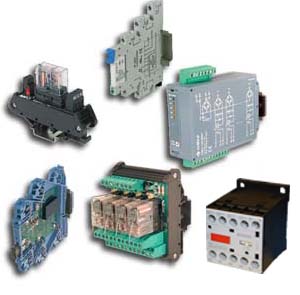Solid state relays or semiconductor relays (also called SSRs) are semiconductor devices that can be used in place of mechanical relays to switch electricity to a load in many applications. They are purely electronic devices, normally composed of a low current control side and a high current load side (switching side). Many solid state relays feature electrical isolation in the thousands of volts between the control side and the load side. This is usually achieved through optical isolation using an optoelectronic device (a photocoupler).

Solid state relays can be optically isolated, transformer isolated, non-isolated, or aerospace / MIL-Spec. A photo-optically isolated solid-state relay in which there is no direct electrical connection between the input and the output relay. A transformer isolated solid-state relay such as a pulse transformer used to trigger a triac. A non-isolated relay is not isolated from the electrical connection; it has two or more electrical circuits sharing a common ground.
An aerospace or MIL-Spec relay meets appropriate military specifications or is intended for aerospace applications. Applications for solid state relays include general applications, automotive, flasher, and latching. General application solid state relays can be used in any industrial situation where a relay is required. Automotive relays are specifically for use in automobiles. A flasher relay activates indicator lights. Can handle high inrush current and continuous connection and disconnection of current. A latching relay has the ability to keep the contact status in place even if power is removed from the equipment. Mounting choices for solid state relays include PC board, socket or plug-in style, bracket or flange mount, and DIN rail.
Important electrical specifications to consider when searching for solid state relays include AC input, DC input, AC output, DC output, input (pick-up) voltage range, input (control signal) current range, maximum switching current, and maximum switching voltage.
Advanced search parameters to consider when looking for solid state relays include output devices, switch configuration and features. Output device choices include MOSFET, bipolar transistor (BJT), SCR, and Triac. Choices for switch configurations include Form A, Form B, Form C, Form D, Form E, Form K, Form X, Form Y, and Form Z. Common features for solid state relays include built-in heat sink, internal snubber, TTL compatible, visual indicators, reversing, zero switching, instant ON, peak switching, and analog switching. An important environmental parameter to consider is the operating temperature.